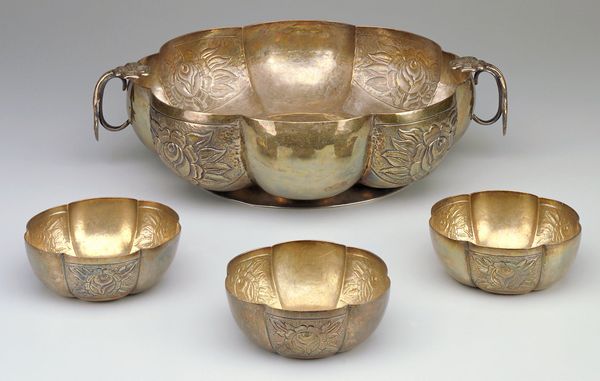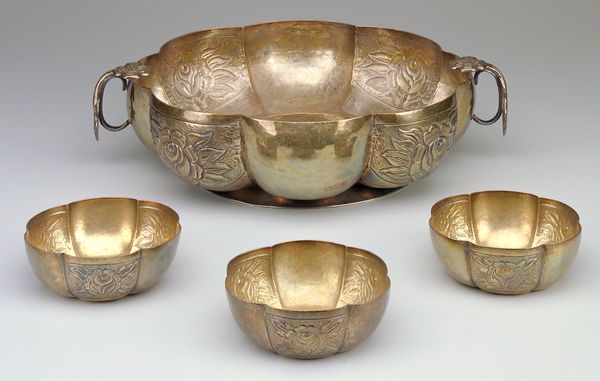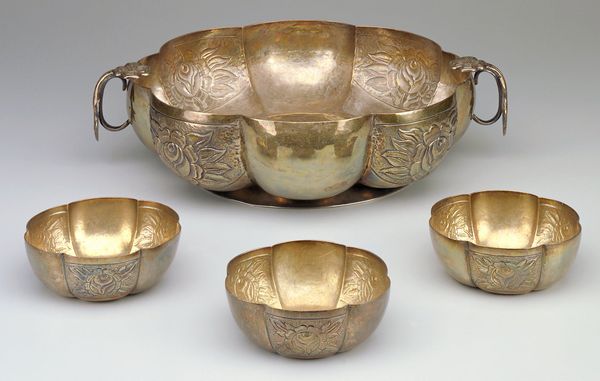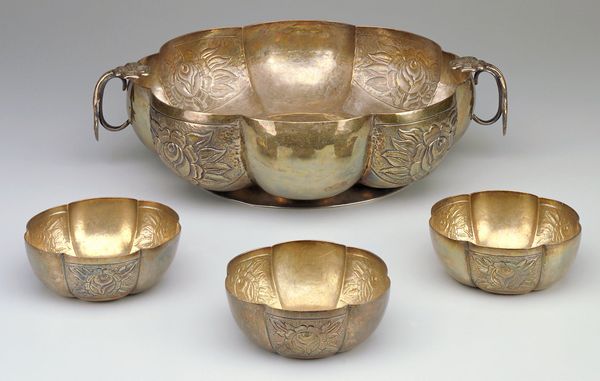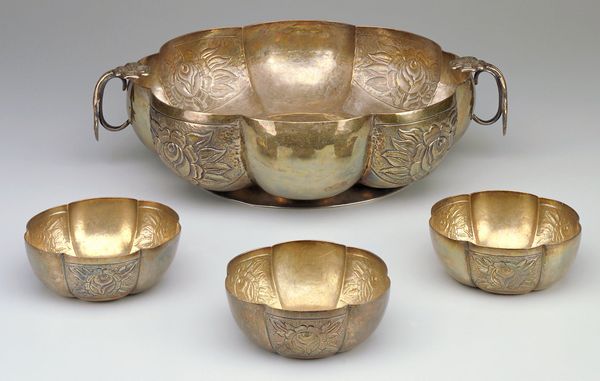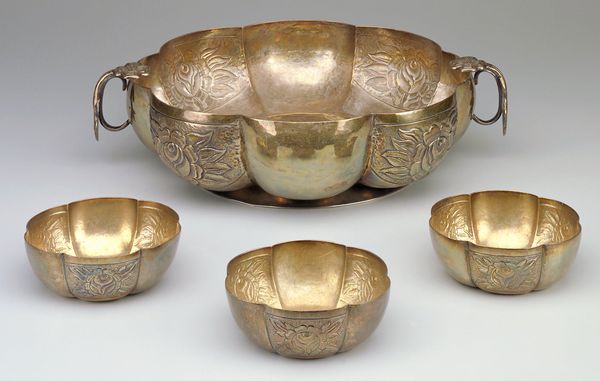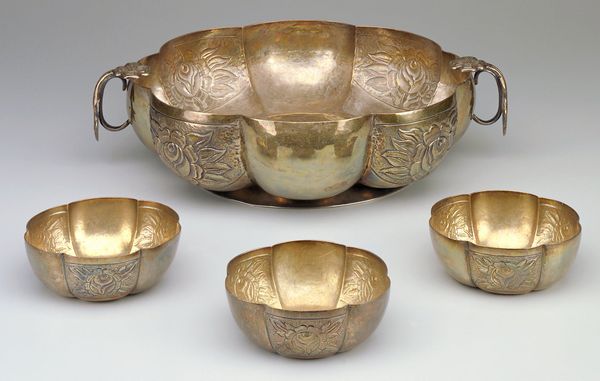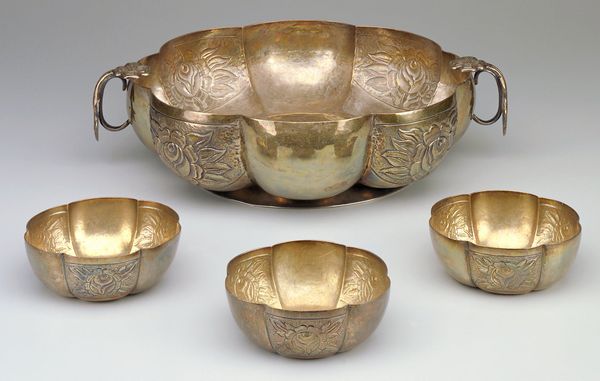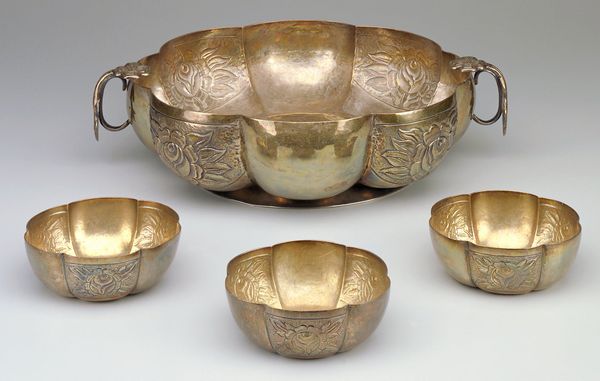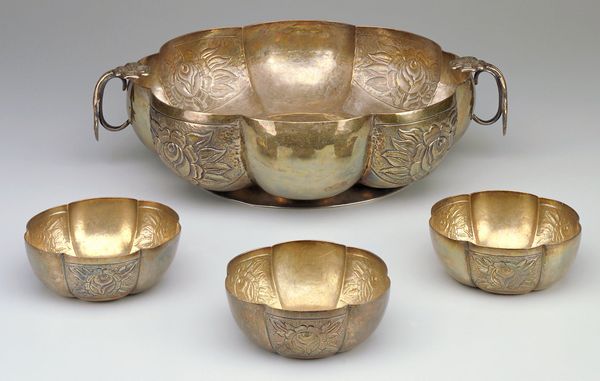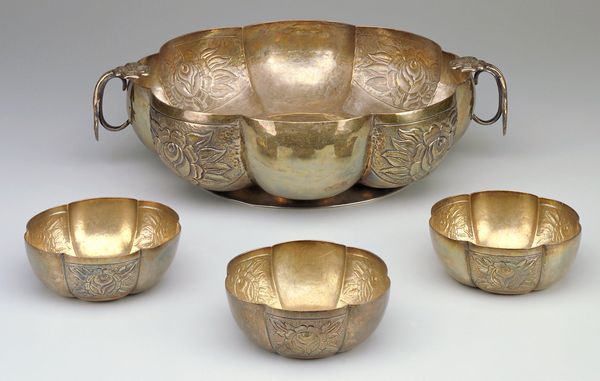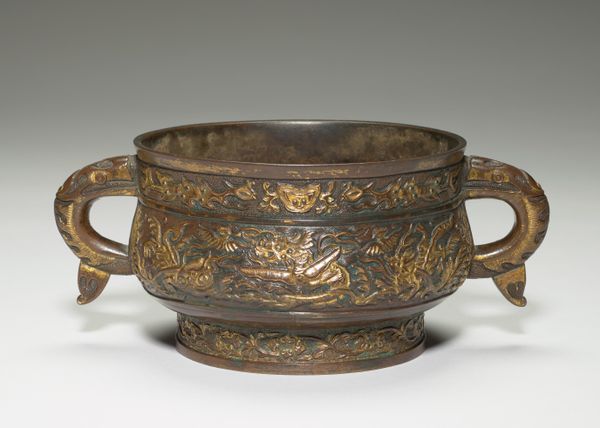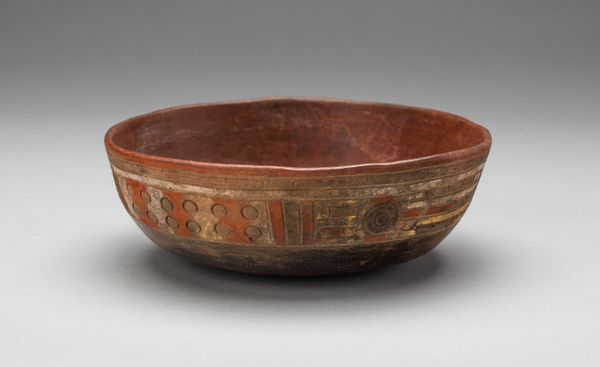
silver, metal, sculpture
#
art-deco
#
silver
#
metal
#
sculpture
#
ceramic
#
decorative-art
Dimensions: 1 5/8 x 4 5/8 x 4 1/2 in. (4.1 x 11.7 x 11.4 cm)
Copyright: Public Domain
Editor: So here we have an object titled "Fingerbowl", crafted around 1929 to 1930. It's a silver metal sculpture and decorative art piece. It almost has an ancient Roman aesthetic but the flower motifs suggest it’s something more modern. What do you make of its contrasting nature? Curator: Ah, "Fingerbowl"! A glimmering relic, isn’t it? It sits on the cusp, doesn’t it? Between lavish art deco indulgence and the streamlined promises of modernity. Those repeated stylized floral patterns pressed into the metal almost echo the machine age's love for mass production. It makes me wonder about the artisan behind it all…did they imagine dinner parties bathed in champagne? What do you imagine it held in the gilded age? Editor: I imagined someone using this while on a picnic as portrayed by Manet, like in *Le Déjeuner sur l’herbe*. But this takes me into thinking, how the placement and the number of bowls impacts its reception. Does it have to do with who the intended user/recipient would be, when someone gets to dine at the White House for example? Curator: Mmm, Manet, I like that! Maybe some absinthe, if we're going full fin-de-siècle, *très élégant!* As for those other implications you point out, let’s be bold enough to admit that such aesthetic pieces will exist to stratify. After all, if just anyone has a silver fingerbowl… well, suddenly nobody does. The elite have to stand apart, it is the principle that defines social class! Editor: I see that perspective and never thought that aesthetics can create such stark divides, thank you! Curator: Glad to bring new perspective to your thought process. These objects truly do carry so much weight beyond their immediate use. It's almost criminal what histories they witness silently.
Comments
No comments
Be the first to comment and join the conversation on the ultimate creative platform.
